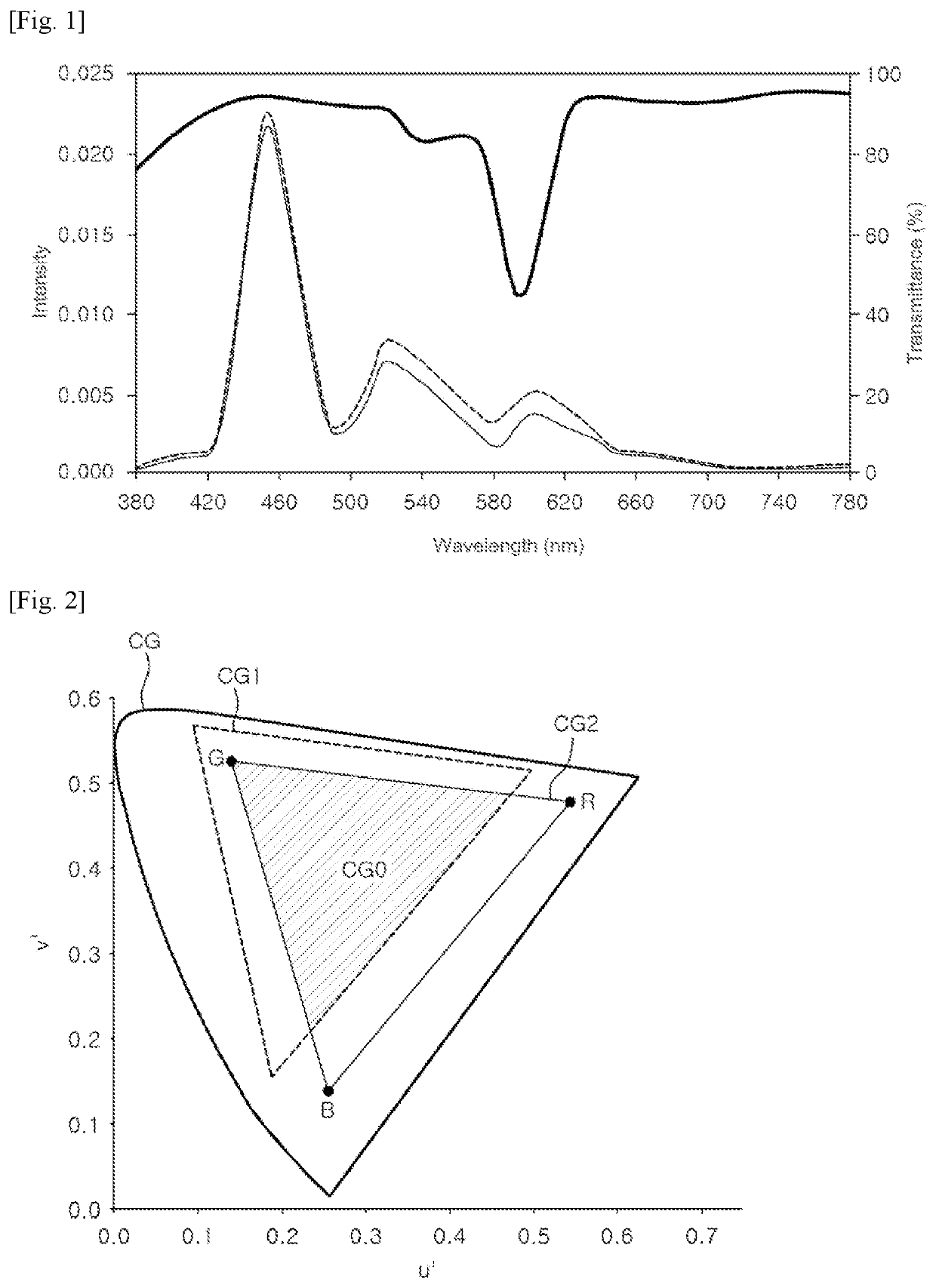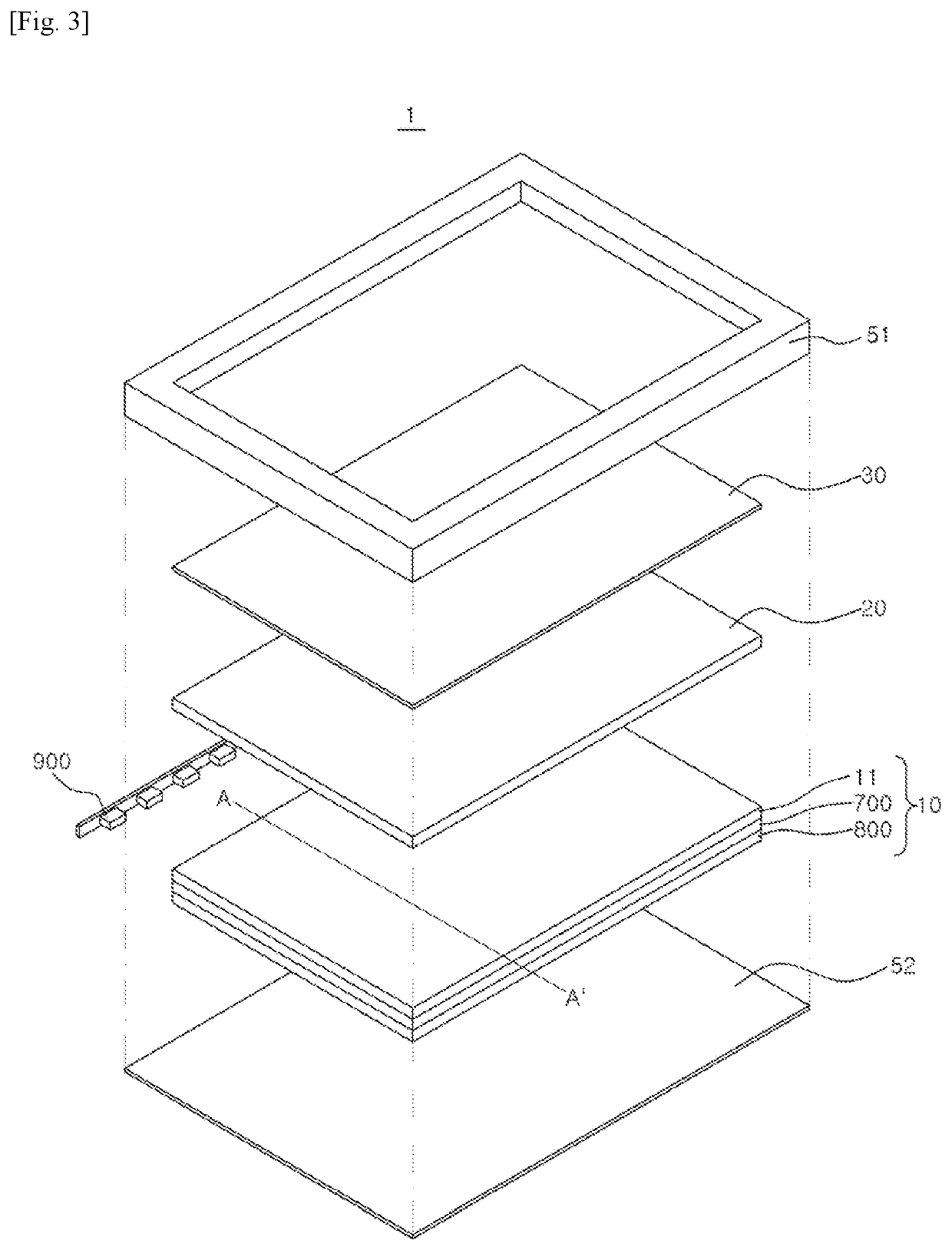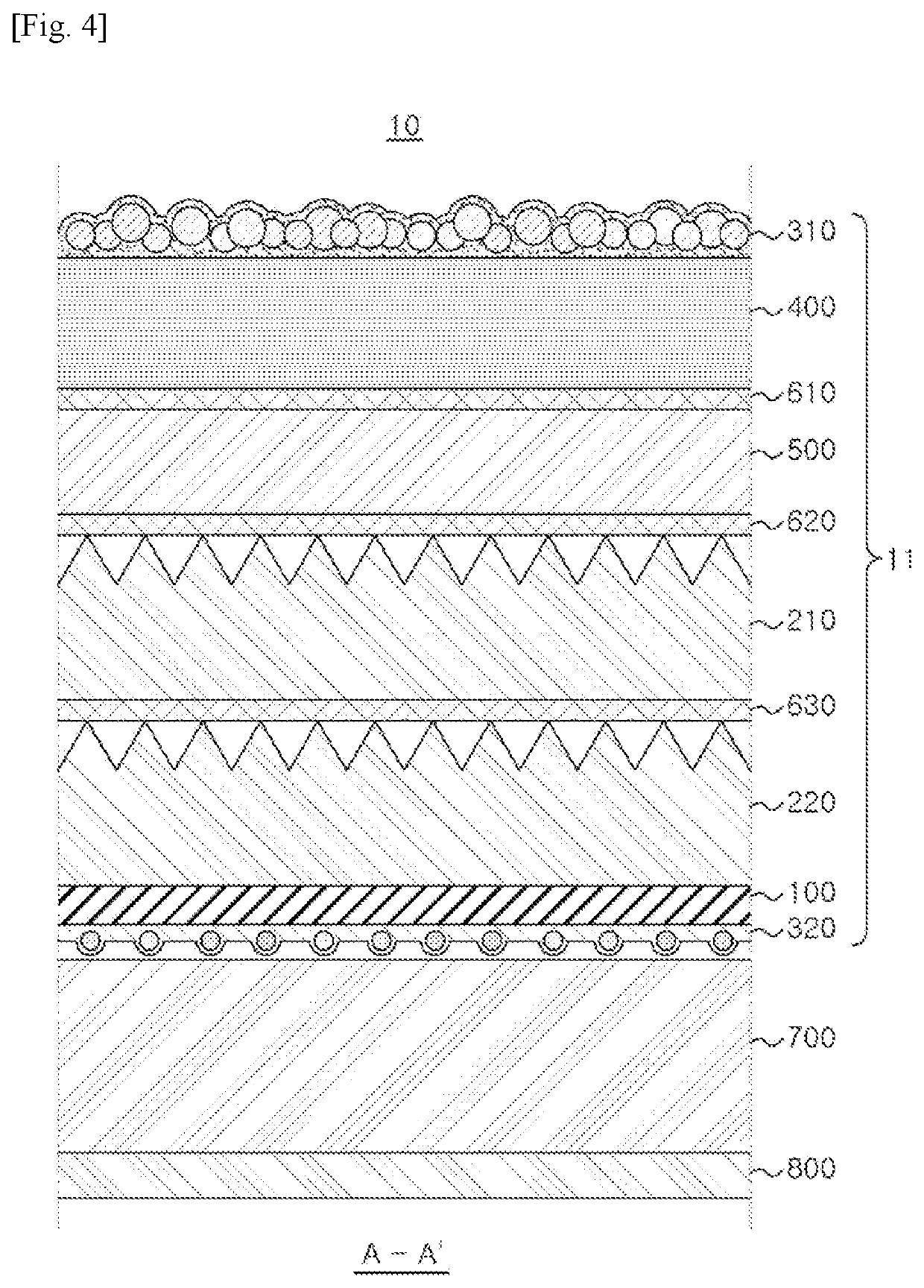Optical composite sheet and display device comprising same
- Summary
- Abstract
- Description
- Claims
- Application Information
AI Technical Summary
Benefits of technology
Problems solved by technology
Method used
Image
Examples
example 1
[0195](A) In order to prepare a composition for a light absorbing layer, 0.05 part by weight of a light absorber (PANAX NEC 584, Ukseung Chemical) and 1.0 part by weight of a UV blocking agent (Tinuvin™ 928, BASF) were added to 100 parts by weight of a solution in which an acrylic binder resin (AOF-2914, Aekyung) and propylene glycol methyl ether (PGME) had been mixed at a weight ratio of 30:70.
[0196](B) A UV-curable resin was coated on one side of a base film (PET) having a thickness of 100 μm to form a prism pattern in a thickness of about 40 μm, thereby preparing a lower prism sheet. The composition for a light absorbing layer was coated on the other side of the base film using a Mayer bar, which was dried and cured to form a light absorbing layer having a thickness of 3 μm. A composition was prepared in which 15 parts by weight of polybutyl methacrylate (PBMA) beads, 35 parts by weight of a urethane acrylate resin, and 50 parts by weight of methyl ethyl ketone (MEK) as a solvent...
example 2
[0200]The procedures of steps (A) to (E) of Example 1 were repeated to obtain a final optical composite sheet, provided that a light absorbing layer was not formed on the other side of the base film of the lower prism sheet in step (B); instead, a light absorbing layer was formed on the other side of the upper prism sheet in step (C), and an adhesive resin was coated on the surface of the light absorbing layer, which adhered to the lower prism sheet, and that the subsequent procedures were carried out (see FIG. 5b).
example 3
[0201]The procedures of steps (A) to (E) of Example 1 were repeated to obtain a final optical composite sheet, provided that a light absorbing layer was not formed on the other side of the base film of the lower prism sheet in step (B); instead, a light absorbing layer was formed on one side of the cushioning film in step (D), and an adhesive resin was coated on the surface of the light absorbing layer, which adhered to the upper prism sheet, and that the subsequent procedures were carried out (see FIG. 5c).
PUM
 Login to View More
Login to View More Abstract
Description
Claims
Application Information
 Login to View More
Login to View More - R&D
- Intellectual Property
- Life Sciences
- Materials
- Tech Scout
- Unparalleled Data Quality
- Higher Quality Content
- 60% Fewer Hallucinations
Browse by: Latest US Patents, China's latest patents, Technical Efficacy Thesaurus, Application Domain, Technology Topic, Popular Technical Reports.
© 2025 PatSnap. All rights reserved.Legal|Privacy policy|Modern Slavery Act Transparency Statement|Sitemap|About US| Contact US: help@patsnap.com



